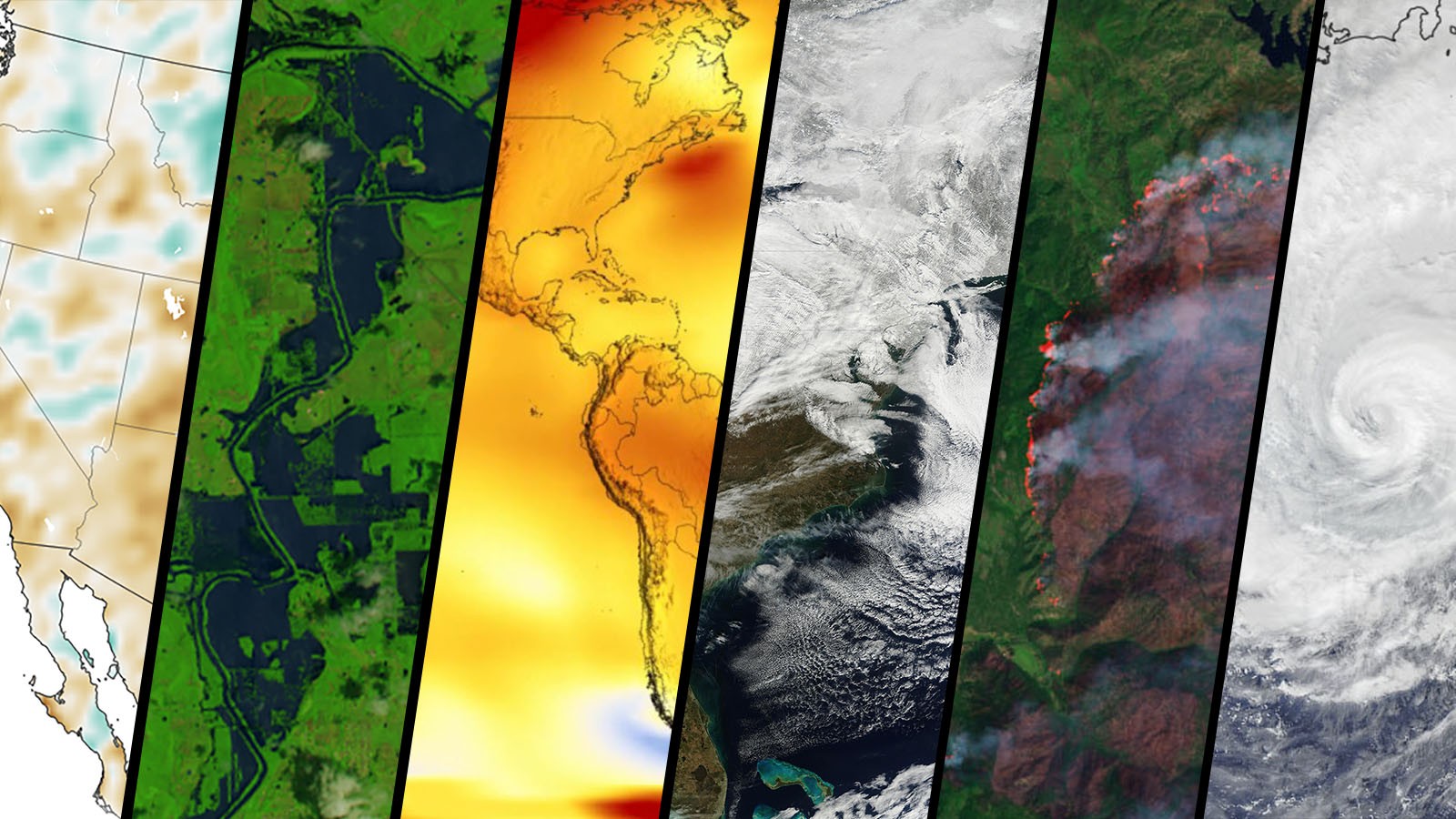USU Faculty Receive Grant to Examine & Communicate Regional Climate Science
By Lynnette Harris |
(Composite of satellite images courtesy of the NASA Jet Propulsion Laboratory)
Simon Wang and Yoshi Chikamoto of the College of Agriculture and Applied Sciences at Utah State University have received a three-year grant as part of a $10.5 million project from the U.S. Department of Energy. The USU component of the project promotes actionable climate science with computer modeling to address the impacts of climate extremes across the United States.
Actionable climate science relies on effectively communicating different kinds of climate information and associated uncertainties beyond academic circles. The project, called HyperFACETS, has been working in the United States to investigate climate information's credibility and salience. The team of scientists and communicators is focused on two fundamental questions:
- How much can we trust given climate information for actionable climate science?
- How can we ensure that climate information is salient for stakeholders and end-users?
USU researchers, including student researchers working with Wang and Chikamoto, contribute to this project by developing tools and methods for evaluating climate models and ensuring those datasets are consistent with reality. Working as part of a team of scientists at 11 universities or national laboratories across the country, Wang and Chikamoto’s work and others’ are focused on the atmosphere-water-energy-land system, which includes dynamic and thermodynamic processes and water availability.
“The framework of this project is to motivate collaboration between stakeholders and scientists and to improve our understanding of the human-climate system,” Wang said. “One high-impact example in our region is the drying of the Great Salt Lake.”
Using a climate model prediction technique recently developed by Chikamoto, the group led by Wang and Chikamoto focuses on drought and specifically on prolonged drought in the Western United States. Their work is part of the project’s larger objective of improving climate modeling for specific regions of the country.
“While end-of-the-century projections are important for the future generation (of citizens), the next two-to-twenty years of that timeframe depend greatly on the practicality of water resources management and therefore is even more critical,” Chikamoto said. “In that regard, our model that predicts the Colorado River water supply can provide more information about the next few years of the drought cycle.”
Wang and Chikamoto are developing high-performance prediction capabilities and disseminating their results while educating users about the uncertainties that are part of every complex system. The HyperFACETS project aims to examine several highly impactful weather and climate events as comparable phenomena to quantify future risks. In addition, this project will develop cutting-edge data tools that improve our understanding of these phenomena and future risks to the U.S. due to increasing climate extremes.
USU’s work will build on research contributed during two previous rounds of the project’s funding over the past seven years. Wang expects that Project HyperFACETS and its USU connection will continue and be recognized among stakeholders and scientists as pioneers in the co-production of climate knowledge.
WRITER
Lynnette Harris
Marketing and Communications
College of Agriculture and Applied Sciences
435-764-6936
lynnette.harris@usu.edu
CONTACT
Simon Wang
Professor
Department of Plants, Soils and Climate
435-797-3121
simon.wang@usu.edu
Yoshi Chikamoto
Assistant Professor of Earth Systems
Department of Plants, Soils and Climate
435-797-0832
Yoshi.chikamoto@usu.edu
TOPICS
Research 877stories Climate 151stories Communication 50storiesComments and questions regarding this article may be directed to the contact person listed on this page.







